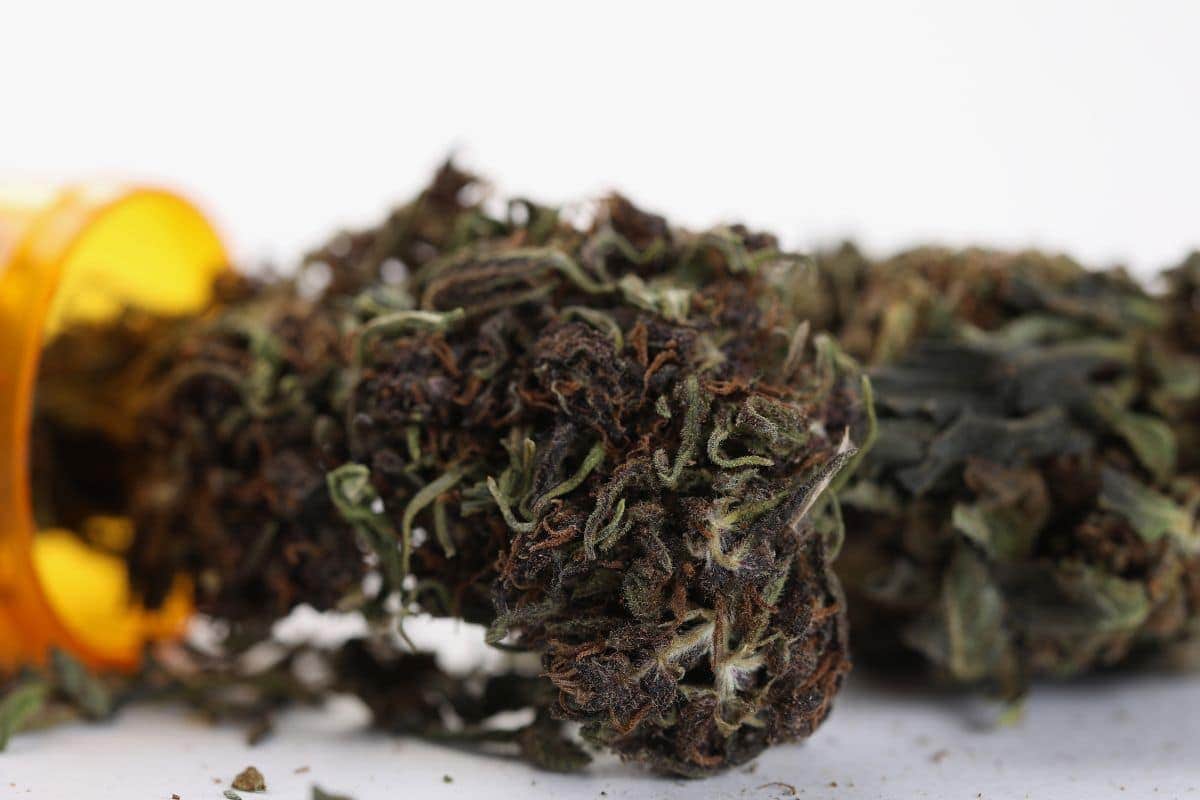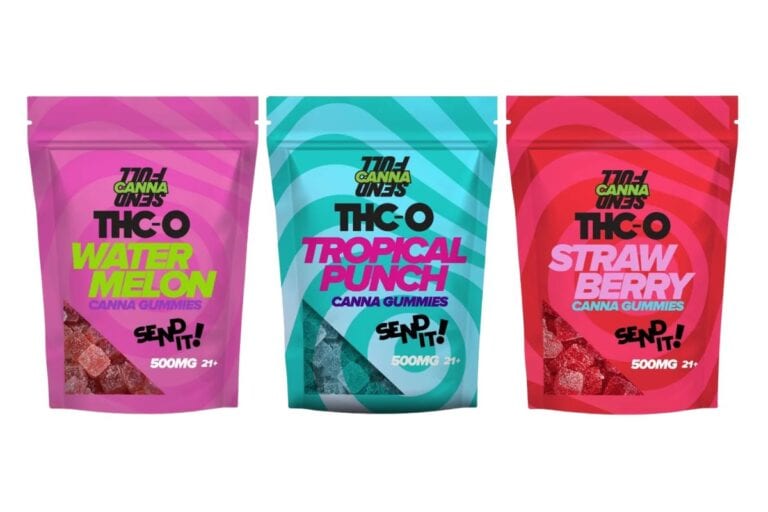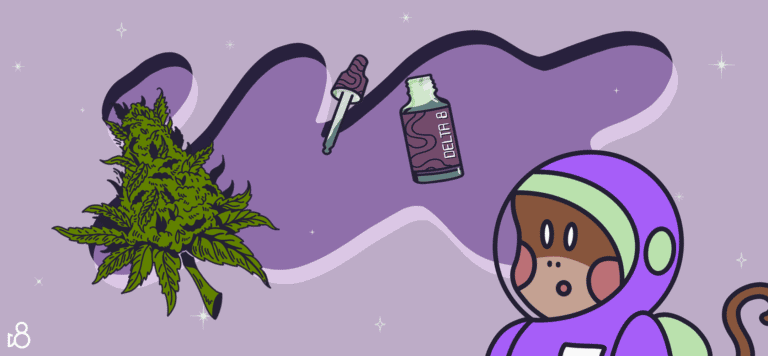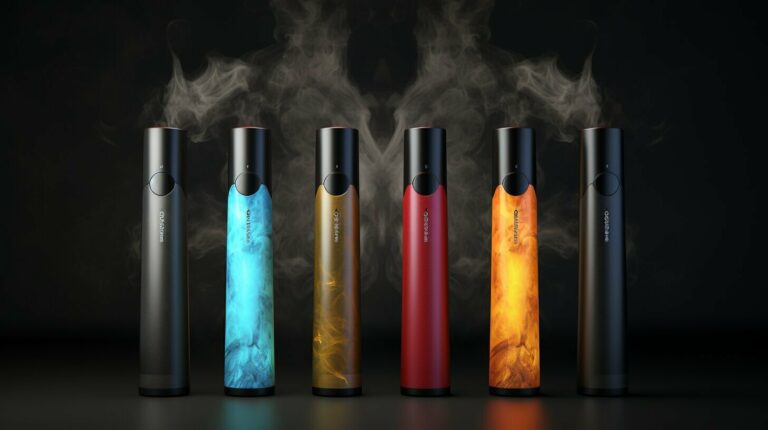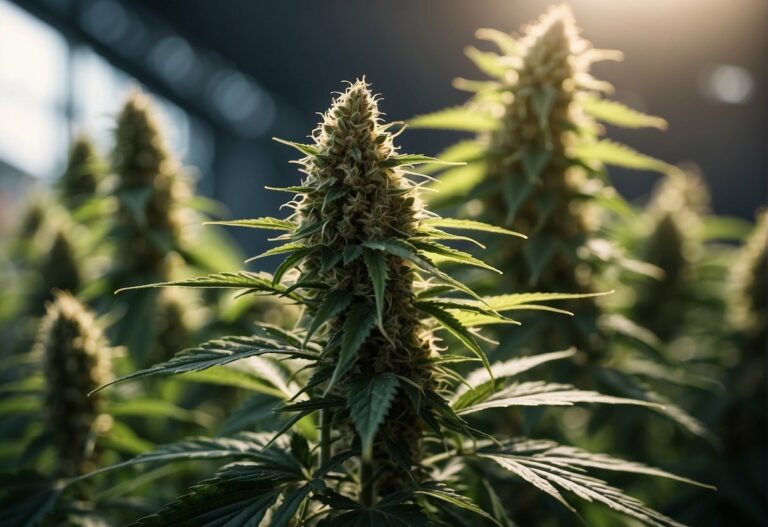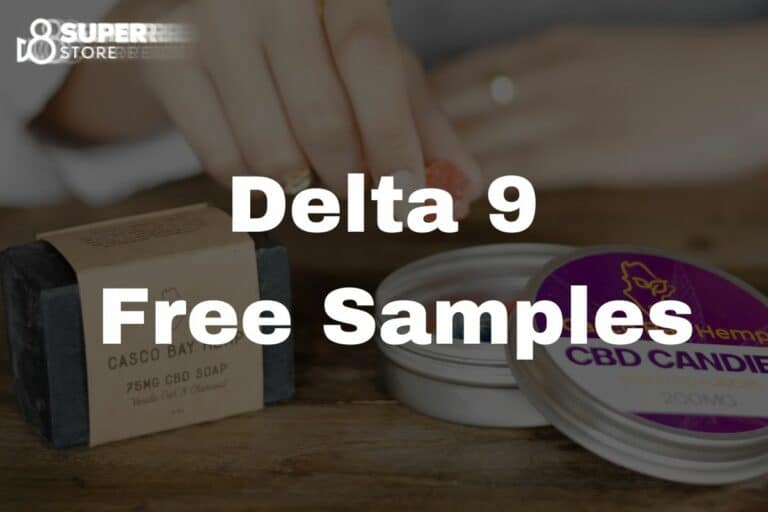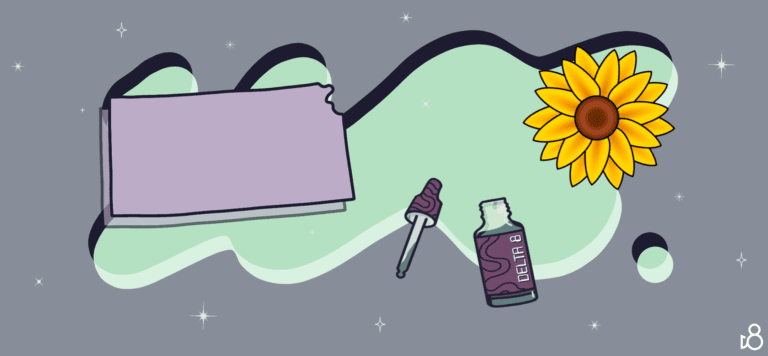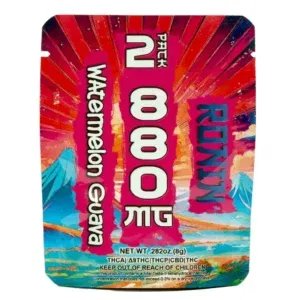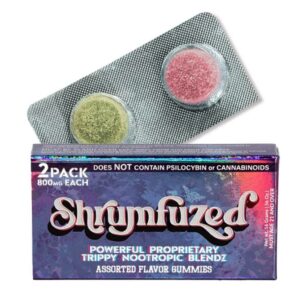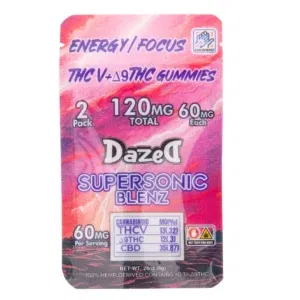Can Cured Flower Have High Delta 9 THC? Understanding Potency Post-Curing
Dive into the zany world of cannabis, and you’ll bump into a cool term: “**cured flower**.” Curious how it connects with the buzz-maker, Delta-9 THC? Imagine hanging laundry but instead, you’ve got marijuana. That’s curing for you. It’s not just drying; it’s magic that boosts the power, taste, and awesomeness of the marijuana. When done just right, curing not only keeps Delta-9 THC safe; it turns it up a notch, taking your experience from great to unforgettable. This nugget is gold for anyone wanting to level up their cannabis game. Stick around, and you’ll learn why skipping out on cured flowers means you’re missing out on top-tier weed. Your cannabis journey’s about to get a whole lot cooler.
Table of contents
- Understanding THC and Its Forms
- Legal Landscape of Cannabis and Hemp
- Cured Flower and THC Content
- Consumption Methods and Effects
- Medical and Recreational Uses of Delta 9 THC
- Risks and Precautions in THC Use
- Storage and Preservation of Cannabis Products
- Quality and Cultivation of Cannabis Plants
- Market Insights for High Delta-9 THC Products
The process of curing is not just about drying the plant material; it’s a careful procedure that prevents the degradation of cannabinoids and terpenes, the compounds responsible for the plant’s distinctive effects and aroma. By curing the flower, the aim is to reach a moisture content that is optimal for preserving its active components. Cured flowers from high-THC cannabis strains have the potential to maintain or even exhibit increased Delta-9 THC levels compared to their uncured counterparts. This is a key factor for those seeking a potent experience from their cannabis products.
However, it’s important to note that the level of Delta-9 THC in cured flowers also depends on the original cannabinoid profile of the strain and the quality of the cultivation and curing processes. In hemp varieties of cannabis, which are bred for high CBD and low THC content, curing will not typically raise the Delta-9 THC concentration above the legal threshold of 0.3%. So, when you’re selecting your cannabis or hemp product, the cultivation and curing methods can make a significant difference in the final Delta-9 THC content of the cured flower.
Understanding THC and Its Forms
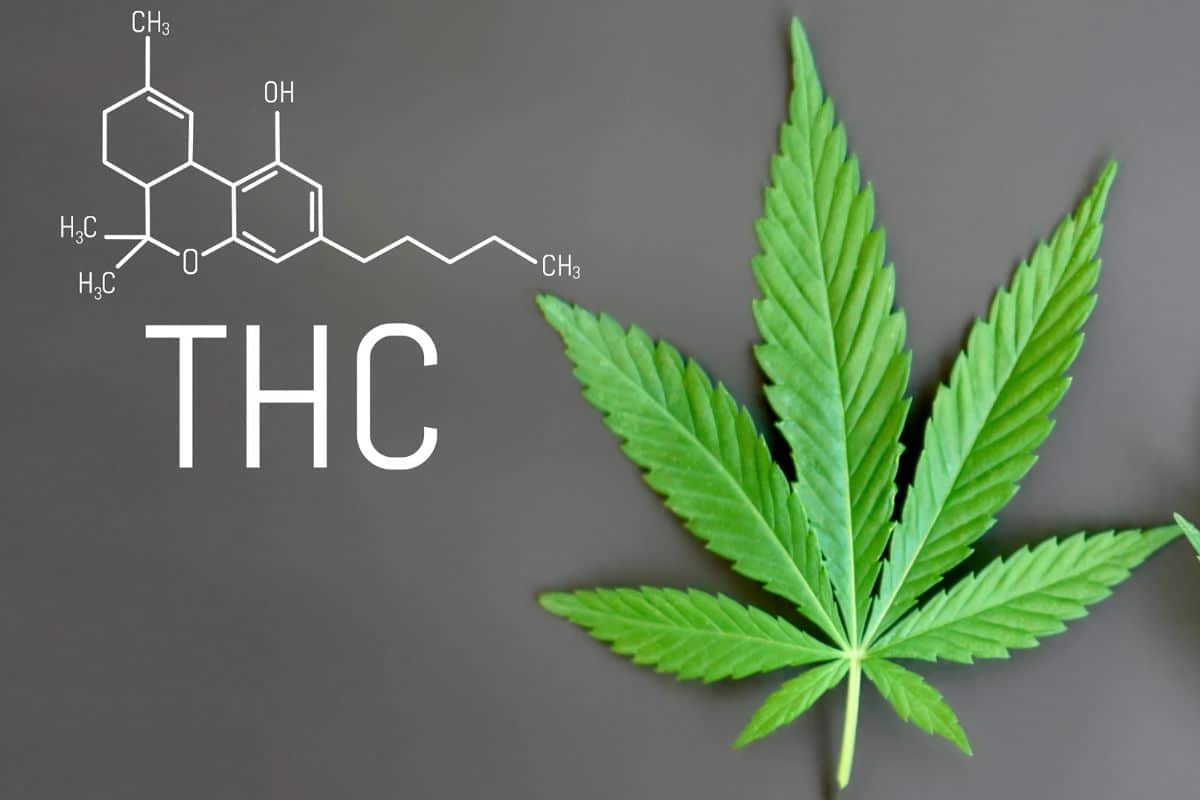
Tetrahydrocannabinol (THC) is the main psychoactive compound in cannabis, with different isomers such as delta-9, delta-8, and delta-10, each with unique chemical structures and effects. Your comprehension of these forms is essential for a thorough understanding of their impact.
Chemical Structures of THC Isomers
Delta-9-tetrahydrocannabinol (Delta-9-THC) is the most prevalent form of THC found in the cannabis plant and is responsible for the majority of psychoactive effects associated with marijuana. This molecule has a particular shape that allows it to bind well with CB1 receptors in your brain, producing the ‘high’ sensation.
Delta-8-THC, on the other hand, is a less potent analog of delta-9-THC. Its structure is nearly identical, with the only difference being the location of a double bond on the eighth carbon chain, hence the name delta-8. Though this may seem a minor difference, it results in a less intense psychoactive experience.
Delta-10-THC is another cannabinoid similar to delta-9 and delta-8, but with its double bond on the 10th carbon chain. While research on delta-10 is still limited, it is believed to have a comparably milder effect than delta-9.
Psychoactive Properties and Effects
The psychoactive properties of THC are primarily attributed to delta-9-THC. When you consume products containing delta-9-THC, it can induce a range of effects including euphoria, relaxation, altered sense of time, and impaired short-term memory.
In contrast, delta-8-THC tends to exhibit a lower psychoactive potency. This means that when you consume delta-8-THC, you may experience a more subdued and clearer ‘high’ compared to delta-9-THC. However, it still interacts with the same cannabinoid receptors and can have similar medical benefits.
It’s crucial to recognize that despite the different effects, all THC forms interact with your body’s endocannabinoid system, though they do so with varying degrees of strength and outcomes. Knowledge of these nuances can guide your choices regarding cannabis products and their potential effects on your body and mind.
Legal Landscape of Cannabis and Hemp
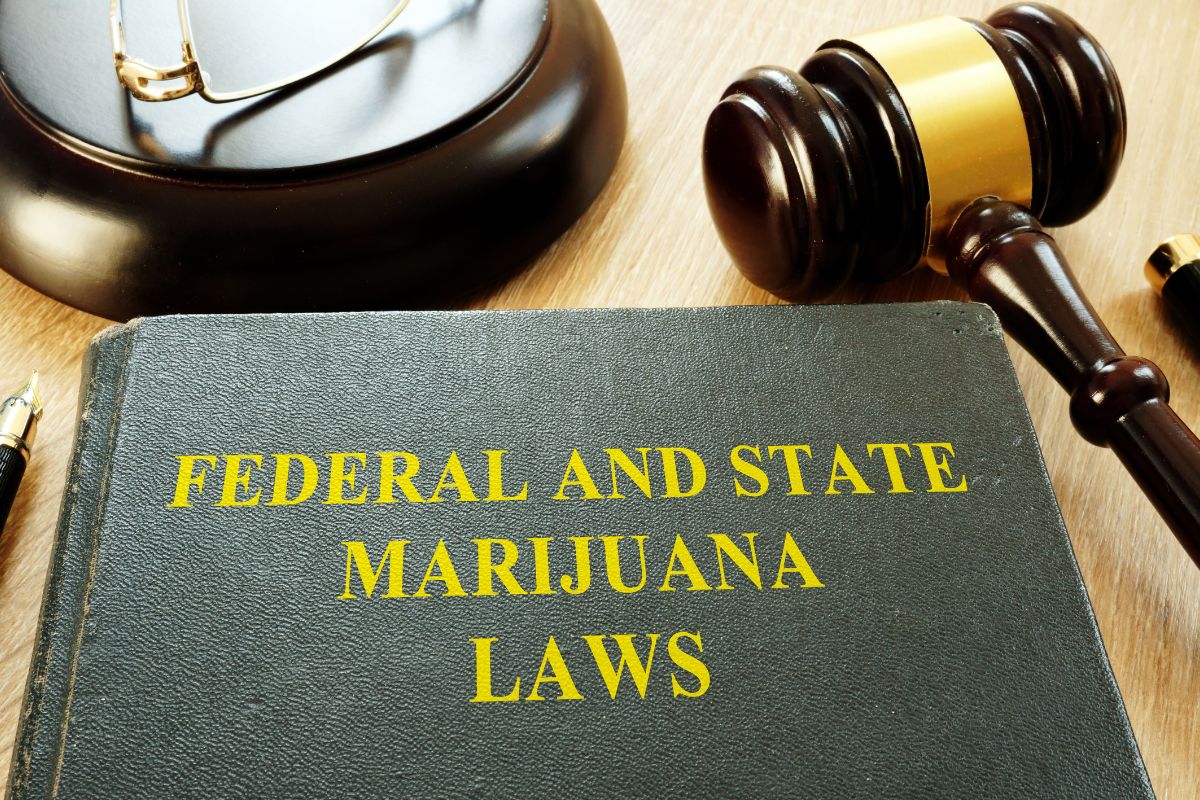
In the United States, the legal status of cannabis and hemp is determined by a complex interplay of state and federal laws, which were notably influenced by the 2018 Farm Bill. This legislation redefined hemp and its legal threshold for Delta-9 THC, marking a significant shift in the federal regulation.
Differences in State and Federal Laws
At the federal level, the 2018 Farm Bill distinguishes legal industrial hemp from cannabis based on Delta-9 THC concentration. Industrial hemp is legally defined as a cannabis plant with a THC content of 0.3% or less on a dry weight basis. Federal law permits the cultivation, production, and sale of this low-THC hemp, which includes hemp-derived products.
In contrast, individual states have established their own regulations, which may diverge from federal law. Some states align with the federal 0.3% THC threshold for hemp, while others have more restrictive or, in some cases, more permissive regulations concerning cannabis, including products with higher THC concentrations.
Hemp-Derived vs. Marijuana-Derived Products
Hemp-derived products, according to the Farm Bill, are legally produced from plants with less than 0.3% THC. These are widely legal across the United States and can include a variety of goods such as CBD oils, edibles, and cured flowers with high CBD and low THC levels.
Marijuana-derived products, on the other hand, come from plants that exceed the 0.3% THC concentration limit. These products are subject to strict regulations and are only legal in states that have legalized medical or recreational marijuana. It’s important for you to check your state’s laws regarding the possession, sale, and use of these higher-THC cannabis products to ensure compliance with local regulations.
Cured Flower and THC Content
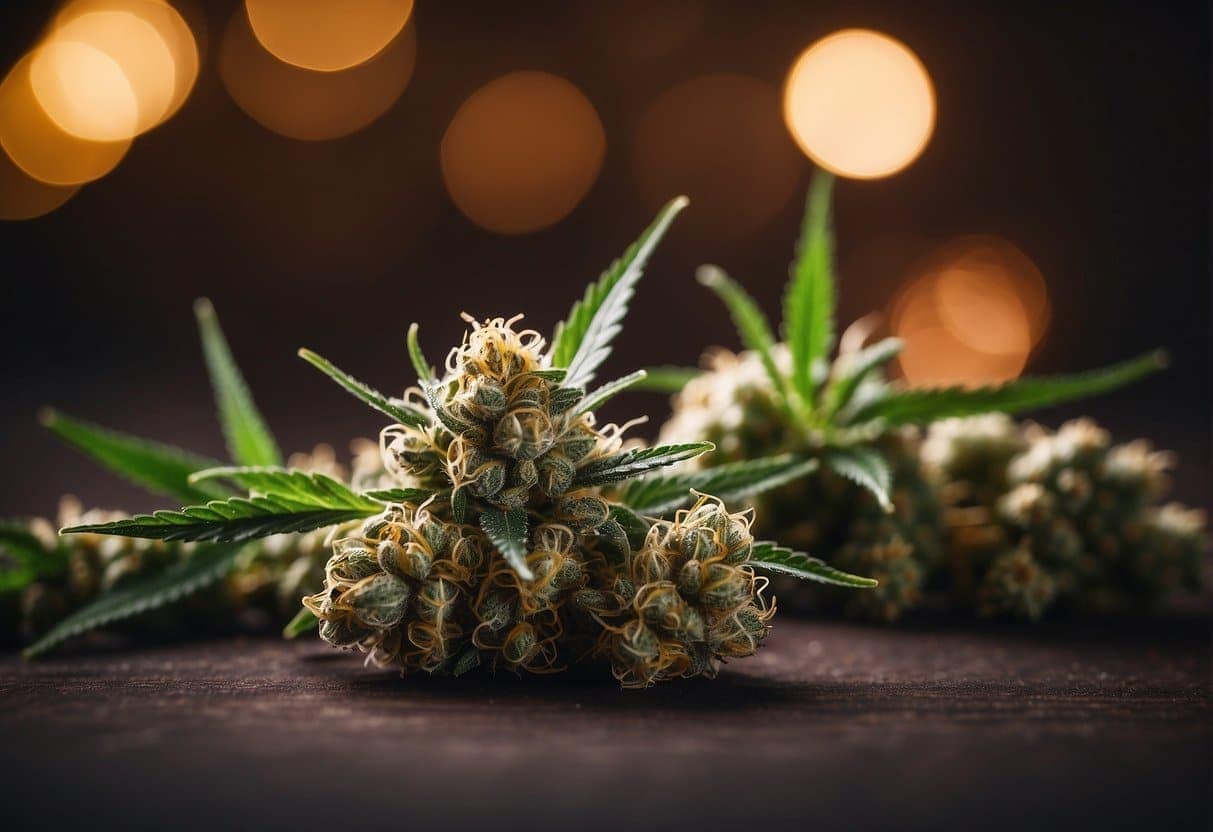
When you’re considering the potency of cannabis, understanding how the curing process affects THC levels is crucial. Careful testing ensures that the final product meets regulatory and consumer standards.
Impact of Curing Process on THC Levels
Curing is an important step in cannabis production that can influence the THC levels in the cured flower. Proper curing can help to preserve and sometimes even enhance the potency of the flower by allowing a slow degradation of chlorophyll without affecting cannabinoids. The environment in which the flower is cured — including temperature, humidity, and light exposure — plays a significant role in determining the final THC content.
Testing and Potency Verification
Assuring the potency and safety of cured cannabis flowers requires stringent testing protocols. To measure THC levels and verify the potency of the flower, reputable laboratories conduct tests using methods like High-Performance Liquid Chromatography (HPLC). This process ensures that the delta-9 THC content complies with legal thresholds and provides you with reliable information on what you’re consuming.
Consumption Methods and Effects
When considering consuming cured flower with high Delta-9 THC content, it’s important to understand that the method you choose not only affects the intensity of the experience but also the duration of the effects. Here, you’ll learn about the differences between smoking, edibles, and other methods, as well as what to expect in terms of side effects, both short-term and long-term.
Comparing Smoking, Edibles, and Other Methods
Smoking cured flower is the most traditional method and effects are typically felt within minutes. The bioavailability of Delta-9 THC through smoking can be high, meaning your body absorbs a significant amount quickly. In contrast, edibles like gummies involve ingesting THC, leading to a delayed onset as the compound is metabolized by your liver before entering the bloodstream. The effects can come on slower but last longer and can be more intense due to the conversion of Delta-9 THC to 11-hydroxy-THC, a potent form.
Beyond these, vaping offers a cleaner alternative, potentially reducing the inhalation of toxins associated with combustion. Vaping can deliver effects similar to smoking, with a quick onset. Concentrates, on the other hand, are potent forms of THC that come in various consistencies and can be consumed using different devices, offering a more controlled dosage and a stronger experience.
Short-Term and Long-Term Side Effects
The short-term side effects of high Delta-9 THC consumption can vary from pleasant euphoria to uncomfortable anxiety or paranoia, largely depending on your tolerance and the consumption method. With smoking and vaping, for instance, you might experience a rapid heart rate or dry mouth. When consuming edibles, you may encounter delayed, sometimes unpredictable, effects that can lead to overconsumption before the initial dose takes effect.
On the long-term side effects, research is ongoing, but some studies suggest potential impacts on memory and cognitive function with chronic use. Your risk of negative side effects can also depend on individual factors like your health status and frequency of consumption. It’s crucial to pace yourself and pay attention to how your body responds to different methods and dosages.
Medical and Recreational Uses of Delta 9 THC
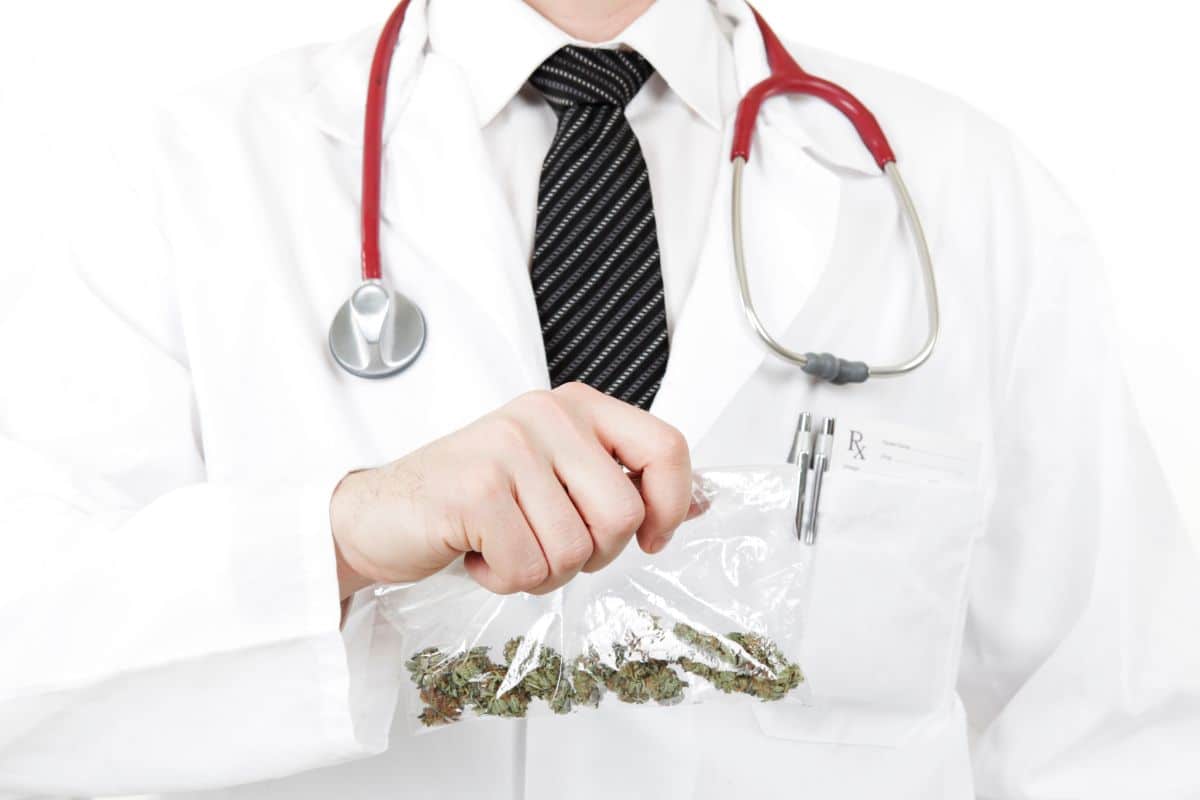
Delta 9 THC, a primary psychoactive compound found in cannabis, is renowned for its applications ranging from medical treatments to recreational enjoyment. Its potency varies based on the curing process of the cannabis flower, which can have a broad impact on its effects.
Therapeutic Effects for Various Conditions
You might seek out medical marijuana for its potential to alleviate various health issues. Delta 9 THC has shown promise in providing pain relief for chronic conditions such as arthritis or multiple sclerosis. It is also commonly used to reduce nausea resulting from chemotherapy and to aid in the treatment of glaucoma, where it may help lower intraocular pressure. Some patients find that it helps in managing insomnia and anxiety, although the effects can vary widely among individuals.
- Pain Relief: research indicates potential to decrease pain sensations.
- Glaucoma: may reduce eye pressure.
- Nausea: can help mitigate chemotherapy-induced symptoms.
- Insomnia/Anxiety: may improve sleep quality and reduce anxiety levels.
Mood Improvement and Recreation
For recreational users, the appeal of Delta 9 THC lies in its ability to induce relaxation and euphoria. It can enhance mood, providing a sense of joy and uplift that many find pleasurable. This recreational use is legal in certain regions and often involves the consumption of cured flowers with high levels of Delta 9 THC.
- Euphoria: the high from Delta 9 THC is often described as pleasurable.
- Relaxation: users report a significant reduction in stress.
- Mood Enhancement: it’s known for its mood elevating properties.
These uses of Delta 9 THC reflect its dual capacity to both alleviate medical conditions and provide recreational benefits. However, the effects can vary greatly depending on the individual, the method of consumption, the concentration in the cannabis flower, and other factors such as individual tolerance and the context of use.
Risks and Precautions in THC Use
When using THC, awareness of its risks and adhering to safety guidelines is crucial for a beneficial experience. Here’s what you need to know to mitigate potential adverse effects.
Potential for Abuse and Dependence
You may face a risk of developing a dependence on THC, characterized by a persistent desire to use despite negative consequences. Addiction is possible, and if you find yourself unable to control the use of cannabis products, it’s important to seek professional help. Common side effects such as dry mouth and red eyes are mild, but the psychological impact, such as paranoia, can be more severe for some individuals.
Safe Dosing Guidelines
To ensure your use of THC remains safe, start with a low dose and go slow, especially if you’re trying a new product or strain. Monitoring the effects of each dose is important to avoid unwanted side effects and reduce the risk of overconsumption. Remember that safe dosing limits vary from person to person due to differences in metabolism and tolerance.
Remember, while THC can have therapeutic effects, treating it with respect and caution is essential to minimize risks and side effects.
Storage and Preservation of Cannabis Products
Proper storage is crucial to maintain the potency, aroma, and quality of your cannabis products. Knowing how to control environmental factors is key to preventing degradation.
Ideal Conditions for Flower and Concentrates
To ensure the longevity of cannabis flowers and concentrates, you should store them in cool, dark places. Heat can accelerate the breakdown of cannabinoids and terpenes, which are responsible for the aroma and effects of cannabis. For flower, maintaining humidity levels between 59% and 63% is essential to preserve freshness and prevent mold growth. Mason jars or other airtight containers are widely recommended for their ability to keep out excess air and moisture.
- Temperature: Aim to store your products below 77°F (25°C).
- Light: Keep cannabis in opaque containers away from direct sunlight.
- Humidity: Use humidity packs to control moisture levels within storage containers.
Preventing Degradation and Maintaining Potency
Maintaining the quality of your cannabis over time means being vigilant about its exposure to the elements. Minimize your products’ contact with air by using airtight containers and only opening them when necessary. Your storage choice should also block UV rays which can degrade THC into CBN, reducing potency. Moreover, proper packaging is vital to preserve the distinct aromas and flavors of your product by retaining its terpenes.
- Air Exposure: Limit this to prevent the oxidation of cannabinoids.
- UV Protection: Store products in containers that offer UV protection.
Quality and Cultivation of Cannabis Plants
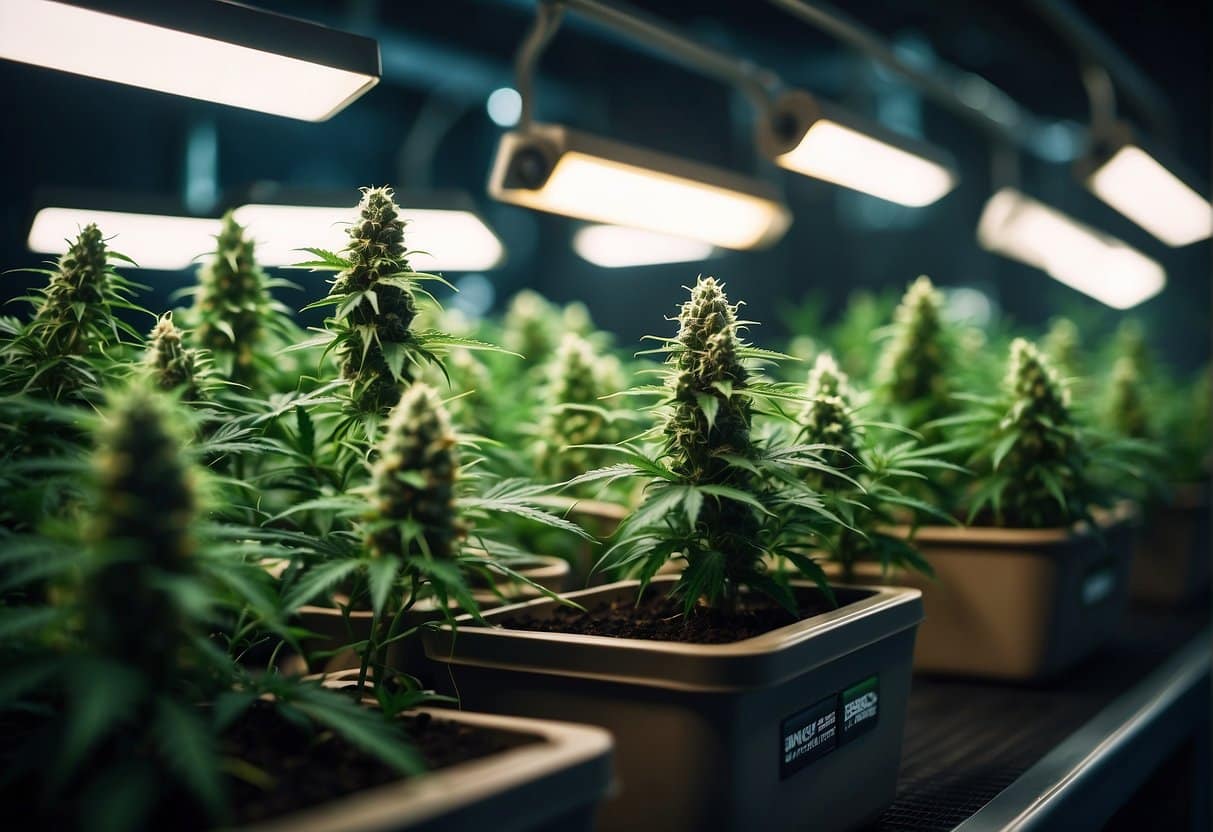
Achieving high delta-9 tetrahydrocannabinol (THC) content in cured cannabis flower involves a combination of optimal growing conditions, genetics, and cultivation practices. The health of your cannabis plants directly influences potential yields and THC levels.
Factors Influencing THC Levels and Plant Health
- Genetics: The cannabis strain you choose sets the foundation for THC potential. Some strains inherently contain higher THC levels due to selective breeding.
- Growing Conditions: Maintaining ideal conditions such as temperature, light, and humidity is crucial. Cannabis plants thrive in environments with ample light and controlled temperatures, which can increase cannabinoid synthesis.
- Cultivation Techniques: Techniques like pruning, low-stress training (LST), and Screen of Green (ScrOG) manipulate plant growth to maximize light exposure and improve air circulation, contributing to overall plant health and resin production.
- Harvesting Time: The timing of the harvest can affect cannabinoid potency. Harvesting when trichomes are at peak maturation can maximize THC content.
Organic vs. Non-Organic Farming Practices
- Pesticides: Using organic pest control methods can reduce contaminants in your final product. Non-organic pesticides can have harmful effects on both plant quality and consumer safety.
- Soil Health: Organic farming enhances soil fertility and biodiversity. Healthy soil harbors beneficial microorganisms that support robust plant growth and higher quality flower production.
- Nutrient Management: Organic nutrients, such as compost teas and natural fertilizers, provide a slow release of nutrients, which is less likely to cause nutrient burn compared to synthetic options.
By focusing on these specific factors and practices, you can cultivate cannabis plants that have the potential for high THC content in the cured flowers. It requires attention to detail and a commitment to meeting the unique needs of your plants throughout their growth cycle.
Market Insights for High Delta-9 THC Products
When you’re navigating the market for high Delta-9 THC products, an understanding of consumer preferences and retail landscapes is crucial. Notably, the traction gained by Delta-9 THC in recreational use has surged, with consumers seeking the characteristic euphoric high associated with its use.
- Strains: A vast selection of high Delta-9 THC strains are available, each with unique profiles offering different flavors and experiences.
- Flavors: From earthy to citrus, the flavor profiles can greatly influence consumer choice.
- Forms: Available in various forms such as flowers, edibles, and concentrates.
Consumer Preferences:
- Recreational users typically search for potent strains that provide a strong euphoric high.
- Preferences may vary based on desired experience, whether it’s relaxation or stimulation.
Online Retail Landscape:
- Online retailers have expanded the availability of high Delta-9 THC products.
- Accessibility varies by region due to differing legality; always ensure compliance with your local laws.
With a range of strains and flavors, high Delta-9 THC flower products cater to a broad spectrum of consumers. Whether you prefer shopping online or in person, it’s essential to purchase from reputable retailers to ensure the quality and legality of the product. As you explore the myriad of options, remember that the potency and effects can vary significantly between strains and forms of consumption.
Frequently Asked Questions
This section addresses your most pressing inquiries about the Delta-9 THC content in cured flower, ensuring you have accurate information on potency and legal considerations.
What factors contribute to a high Delta-9 THC content in cured flowers?
The potency of Delta-9 THC in cured flowers can be influenced by genetics, cultivation techniques, and curing processes. Optimal growing conditions and careful curing can preserve and even enhance the THC levels.
Is there a legal threshold for Delta-9 THC concentration in flower products?
Yes, the legal threshold for Delta-9 THC content in hemp-derived flower products must be below 0.3% according to federal guidelines. States may impose their regulations, often aligning with this standard.
What processing methods are used to increase Delta-9 THC in flower?
Certain techniques like curing can enhance the Delta-9 THC concentration. This is achieved by controlling environmental factors to preserve the cannabinoids and terpenes present in the flower after harvesting.
What are some top-rated strains known for elevated Delta-9 THC levels?
Strains such as ‘Godfather OG’ and ‘Chemdawg’ have reputations for high Delta-9 THC levels, often sought by those desiring potent effects.
How does the potency of Delta-9 THC flower compare to other cannabis products?
Delta-9 THC flower potency can be quite variable but is generally lower than concentrated products such as oils and extracts. However, it remains a preferred choice for many due to its natural composition and traditional consumption methods.
Can consuming Delta-9 THC flower result in intoxication, and what are the expected effects?
Consuming Delta-9 THC flower can lead to intoxication, with effects including euphoria, altered perception, and relaxation. The intensity of these effects can depend on the THC potency and individual tolerance.

